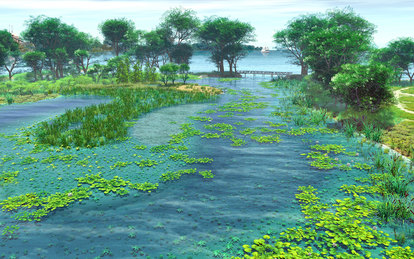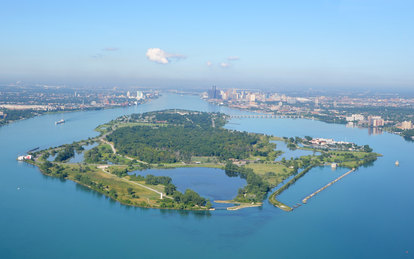Blue Heron Lagoon Habitat Restoration
Through an interdisciplinary approach combining landscape architecture and scientific knowledge, the design restores ecological quality and function while enriching recreational opportunities within the park.
Client
Friends of the Detroit River
Location
Detroit, Michigan
Markets/Services
Civil Engineering, Landscape Architecture, Natural Systems & Habitats, Parks & Open Spaces, Waterfront
Size
41 acres
Just the aesthetics of it look great. And what it does for habitat, for the fish to thrive in this area, the opportunities for fishermen... I think it's money well-spent.
Keith Flournoy, Belle Isle Park Manager
A river is a place of life. A channel of productivity. It is an ecosystem that sustains those inside and outside of its waters. The Detroit and St. Clair Rivers are no exceptions.
Historically, their rocky shores and swift currents were ideal for aquatic spawning and attracted fish from all over The Great Lakes. The rivers soon became one of the most prolific fisheries in the Midwest. The rise of industrial and commercial traffic along the river corridor — along with overfishing and shoreline development — altered the rivers’ productivity, changing their flow, and damaging areas where many fish reproduced.
Blue Heron Lagoon, located at the tip of Belle Isle, had not only become isolated from the rivers, but from the entire ecological system. Our solution was to re-connect the region’s habitats to and within the lagoon.
With the removal of an old dam and sheet pile barriers that had prohibited fish access from the Detroit River, several free-flowing channels were created, establishing access between the restored 41-acres of wetlands and the river. A spawning reef was expanded to increase overall habitat diversity.
But Belle Isle is a place for humans too, and like any public park, changes made for the wildlife must also work for the people. A bridge spanning one of the lagoon inlets connects recreational trails on the island, providing visitors with a closer look at the water, and at the many swarms of fish that swim beneath.

